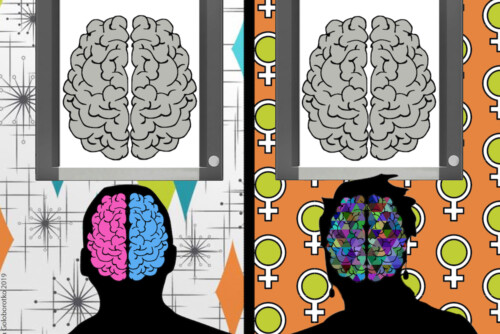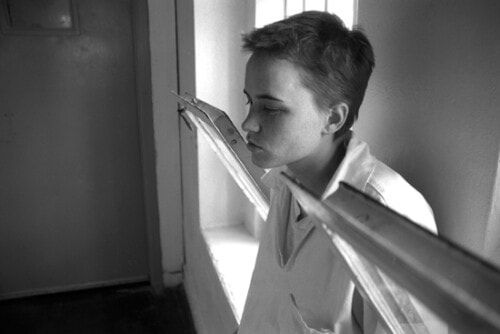Max’s phantasm coincides with the making of Baker’s myth. Baker the artist has a secretary—a term used by Sauvage in the Mémoires (M, 22)—a writer and journalist of good standing. Max de Mirecourt has a secretary, a ghostwriter, to take down what he dictates. However, the filmic situation of the writer’s block means that his creative energy is failing him. Thus, “dictation” must be the theft of the primitive subject’s speech, of her parole. In the commercial clip, the one who “steals” could be said to be Colin, who transfers onto paper Josephine’s gestures, her motion, her moving body. An amused Marcel Sauvage pretends that he is writing in bold strokes (can writing be filmed?). Thanks to Colin’s presence, writing is also equated to sketching: the autobiography could not be complete without the prints (and later, the photographs). Thus, the clip restores partial agency to Baker, whose life is ultimately the subject of the memoirs, while the film suggests that the writer’s reliance on the colonial subject eventually leaves the latter out.
Subverting the Orientalist racial overtones of Princess Tam Tam is the constant possibility of refuting the fictional story line with actual autobiographical moments that, granted, are not exempt of their own tensions. These strict overlaps, or coincidences, could be understood, after Barthes’s terminology for photography, as incidences of “autobiographical punctum,” perceived by the viewer when fiction gives way to biographical data. Strictly speaking, the “punctum” is a detail that breaks the “studium,” that undifferentiated investment in something or somebody: “[the punctum] starts from the scene and comes to pierce me.” It is a “wound,” a “prick, a small hole, a small stain, a small cut.” 1 I wish to extend this notion here to allusions, scenes, and themes that strike the viewer as “real”: for example, moments in which “Alwina” disappears and Baker the well-known star (and beyond her the woman) comes to the fore. The fictional code vanishes under the impact of the “autobiographical” detail, the “autobiographical” moment, the “autobiographical” sequence. 2
Alwina’s love for animals (M, 40) and children coincides with the real-life Baker, who raised rabbits in her dressing room (M, 75). The monkey climbing the tree in Max’s Tunisian garden is a direct reference to Baker’s monkey. 3 Baker owned a menagerie and had a pet leopard named Chiquita that was ultimately given to the Zoo de Vincennes. The actual sculptures and sketches shown in the film as part of Alwina’s triumph in Paris are obviously tributes made by artists who found in Baker a muse for their talent, and not to a transformed Alwina. 4 The white marble head is followed by caricature-styled drawings, some of them by Colin. The inclusion of this sequence in the film, a sequence that Baker referred to as the “autobiographical sequence,” makes the framing device of the film—Alwina as Galatea to Max’s Pygmalion—cave in, to the benefit of the Pygmalion story that Pepito Abatino actually wrote by his mentoring of Baker. The framing and the framed reciprocally alter each other. The core of desire that initiates artistic creation contaminates and is contaminated by the real-life story.
- See Roland Barthes, La Chambre claire: note sur la photographie (Paris: Seuil, 1980), p. 49. Within the scope of this paper, I can only allude to some of these overlaps.[↑]
- For a more thorough analysis of the generic implications of this effect, see Claudine Raynaud, “Les Mémoires et les films de Joséphine Baker ou l’espace autobiographique comme construction en miroir.” Unpublished paper from the Conference “Self-Writing in the Americas,” Université de Versailles-St Quentin, 20 June 2007.[↑]
- It was also a nickname for Baker in her earlier career.[↑]
- Baker is associated with Cubism, Primitivism, and Surrealism and, in addition to Alexander Calder and Paul Colin, with the following artists: Francis Picabia, Pablo Picasso, Kees Van Donger, Le Corbusier, Man Ray, Henri Laurens, Tsugouharu Foujita, Georges Rouault, Marie Laurencin, Louis Aragon, Adolf Loos, and Colette. Photographers, architects, and haute-couture designers also found in her a source of inspiration.[↑]



